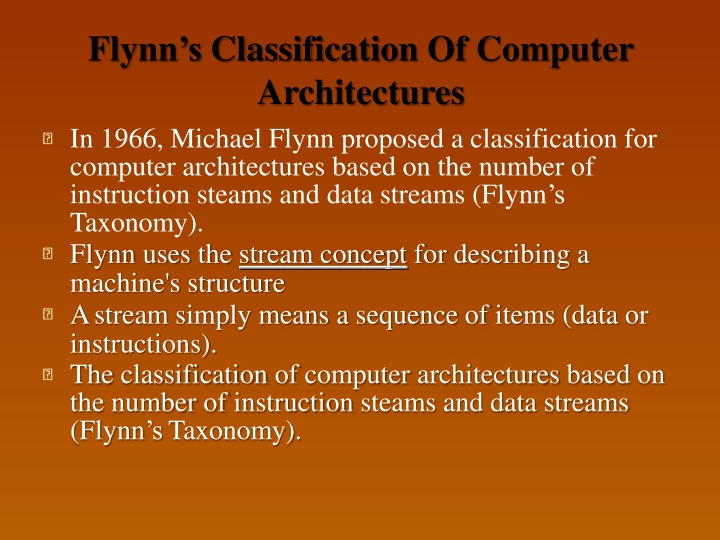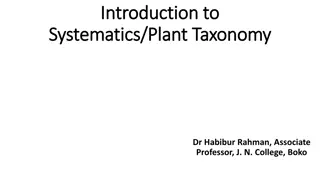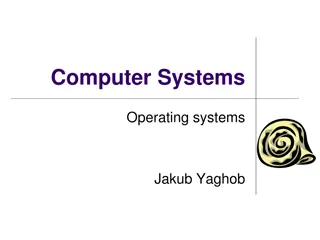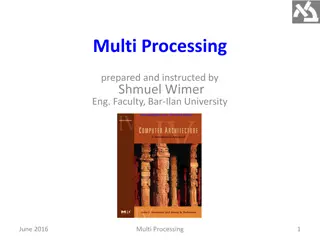Flynn's Taxonomy: Classification of Computer Architectures
Michael Flynn's 1966 classification divides computer architectures into SISD, SIMD, MISD, and MIMD based on the number of instruction streams and data streams. SISD corresponds to traditional single-processor systems, SIMD involves multiple processors handling different data streams, MISD has multiple processors operating on a single data stream, and MIMD represents parallel machines with multiple instruction and data streams.
Download Presentation

Please find below an Image/Link to download the presentation.
The content on the website is provided AS IS for your information and personal use only. It may not be sold, licensed, or shared on other websites without obtaining consent from the author.If you encounter any issues during the download, it is possible that the publisher has removed the file from their server.
You are allowed to download the files provided on this website for personal or commercial use, subject to the condition that they are used lawfully. All files are the property of their respective owners.
The content on the website is provided AS IS for your information and personal use only. It may not be sold, licensed, or shared on other websites without obtaining consent from the author.
E N D
Presentation Transcript
Flynns Classification Of Computer Architectures In 1966, Michael Flynn proposed a classification for computer architectures based on the number of instruction steams and data streams (Flynn s Taxonomy). Flynn uses the stream concept for describing a machine's structure Astream simply means a sequence of items (data or instructions). The classification of computer architectures based on the number of instruction steams and data streams (Flynn sTaxonomy).
Flynn Classification Of Computer architectures Flynn sTaxonomy SISD: Single instruction single data Classical von Neumann architecture SIMD: Single instruction multiple data MISD: Multiple instructions single data Non existent, just listed for completeness MIMD: Multiple instructions multiple data Most common and general parallel machine
SISD SISD (Singe-Instruction stream, Singe-Data stream) SISD corresponds to the traditional mono- processor ( von Neumann computer).Asingle data stream is being processed by one instruction stream Asingle-processor computer (uni-processor) in which a single stream of instructions is generated from the program. OR
SISD where CU= Control Unit, PE= Processing Element, M= Memory
SIMD SIMD (Single-Instruction stream, Multiple- Data streams) Each instruction is executed on a different set of data by different processors i.e multiple processing units of the same type process on multiple-data streams. This group is dedicated to array processing machines. Sometimes, vector processors can also be seen as a part of this group.
SIMD where CU= Control Unit, PE= Processing Element, M= Memory
MISD MISD (Multiple-Instruction streams, Singe- Data stream) Each processor executes a different sequence of instructions. In case of MISD computers, multiple processing units operate on one single-data stream . In practice, this kind of organization has never been used
MISD where CU= Control Unit, PE= Processing Element, M= Memory
MIMD MIMD (Multiple-Instruction streams, Multiple-Data streams) Each processor has a separate program. An instruction stream is generated from each program. Each instruction operates on different data. This last machine type builds the group for the traditional multi-processors. Several processing units operate on multiple-data streams.























